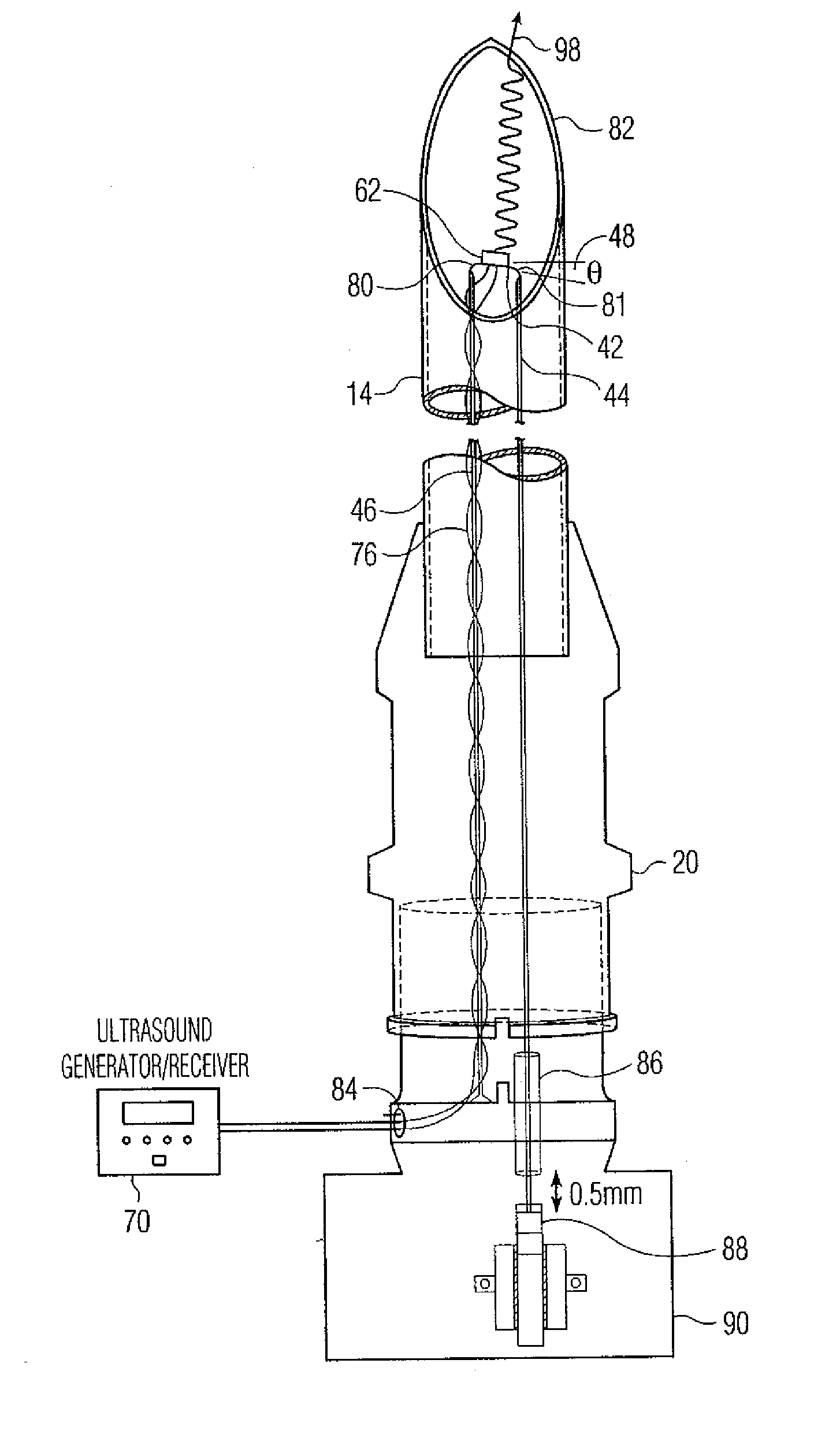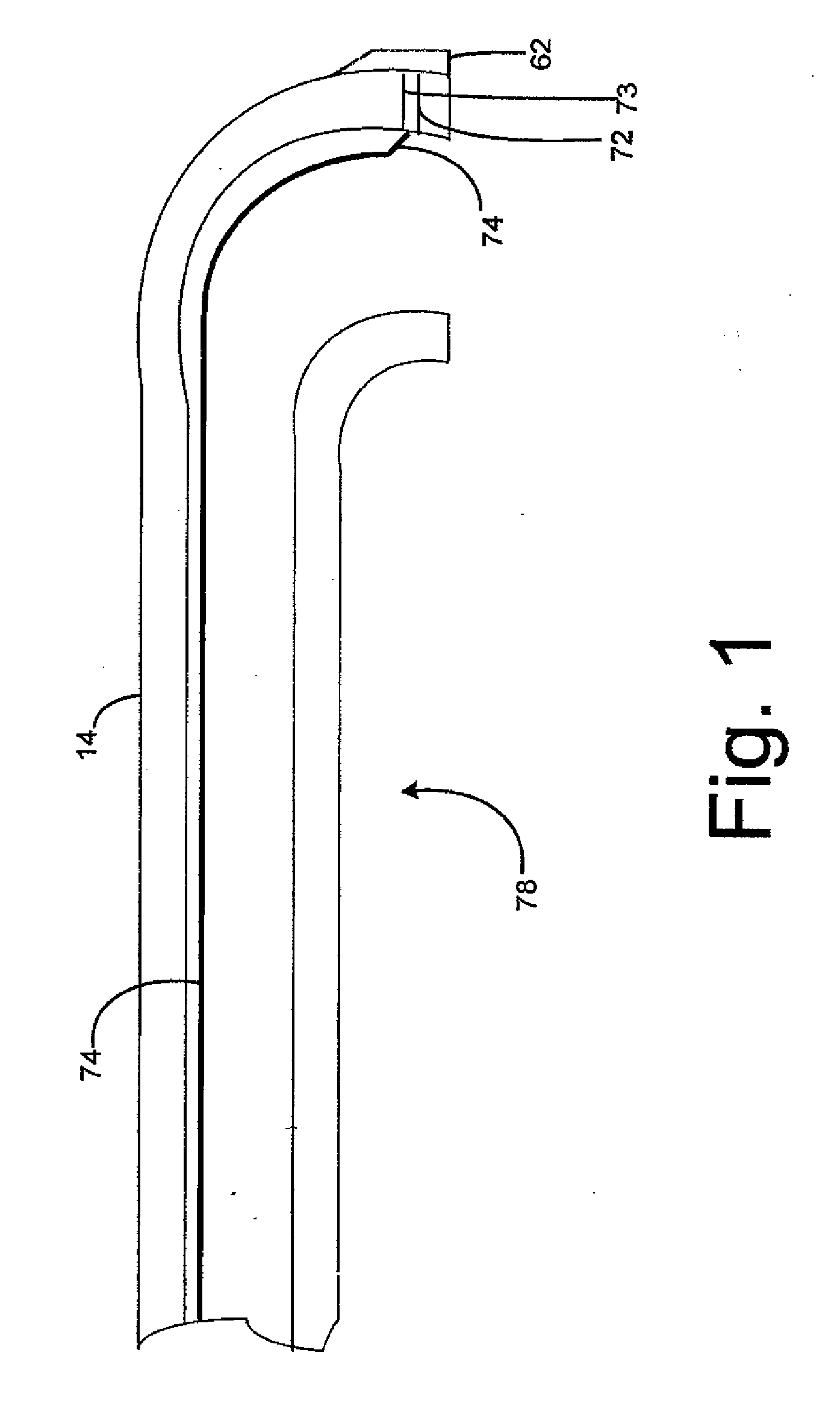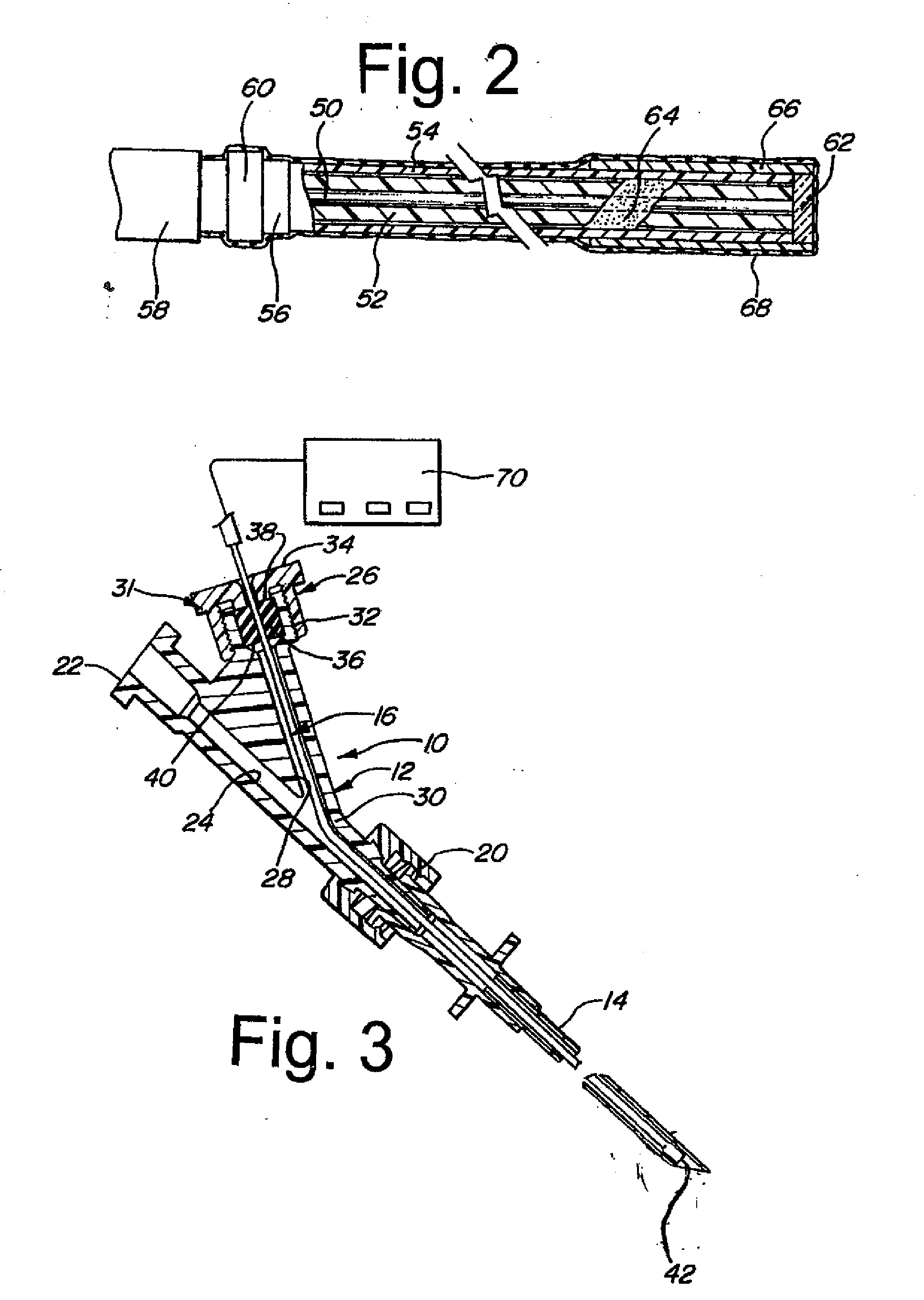Regional anesthetic method and apparatus
a regional anesthesia and anesthetic technology, applied in the field of regional anesthesia and epidural needles, can solve the problems of insufficient epidural anesthesia, dural puncture or “wet taps", risk of errors, etc., and achieve the effect of convenient regional anesthesia
- Summary
- Abstract
- Description
- Claims
- Application Information
AI Technical Summary
Benefits of technology
Problems solved by technology
Method used
Image
Examples
first embodiment
[0038]FIG. 5 shows cross-sections of the struts where reciprocating strut 92 and stationary strut 94 are each D-shaped, with the flat parts 93 and 95, respectively, facing each other. Reciprocating strut 92 is solid 99 in this embodiment, and stationary strut 94 has a channel 96 through which wires 76 are threaded rather than being wrapped around the stationary strut 46 of FIG. 4.
second embodiment
[0039]FIG. 5A shows cross-sections of the struts where reciprocating strut 92a and stationary strut 94a are each generally D-shaped, with the flat parts 93 and 95, respectively, facing each other. The struts in this embodiment are fluted 91 (shown as indentations in cross-section) so as to provide fluid passageways between the struts 92a, 94a, and the internal wall of needle 14, shown in FIG. 4.
[0040]FIG. 6 illustrates and embodiment similar to that of FIG. 5 except that struts 92 and 94 are each hollow 97. In this view, stage 42 supporting transducer 62 is bonded at 80 to the outer sides of struts 92 and 94. When the reciprocating strut 92 is driven by the motor as illustrated in FIG. 4, the stage see saws back and forth, causing the path of the ultrasound to sweep and thereby enable two dimensional imaging.
[0041]FIG. 7 illustrates a different embodiment of Tuohy needle 14 wherein a MEMS motor 89 is mounted on a base 69 within a dome-shaped housing 65 near the tip 82 of the needle...
PUM
 Login to View More
Login to View More Abstract
Description
Claims
Application Information
 Login to View More
Login to View More - R&D
- Intellectual Property
- Life Sciences
- Materials
- Tech Scout
- Unparalleled Data Quality
- Higher Quality Content
- 60% Fewer Hallucinations
Browse by: Latest US Patents, China's latest patents, Technical Efficacy Thesaurus, Application Domain, Technology Topic, Popular Technical Reports.
© 2025 PatSnap. All rights reserved.Legal|Privacy policy|Modern Slavery Act Transparency Statement|Sitemap|About US| Contact US: help@patsnap.com



